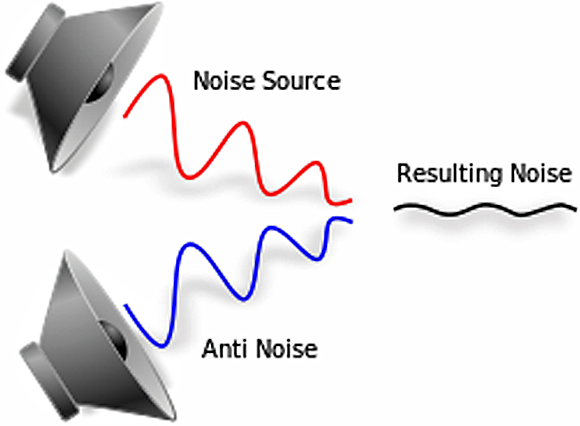
Accuracy in wearables continues to get a great deal of attention recently, primarily because of the optical heart rate monitors in many wearables today. This article will shed some light on one of the most important factors in wearable accuracy known as "active signal characterization".
Active signal characterization is a term used to describe the process of actively identifying and characterizing different types of raw signal data from the biometric sensors found on many wearable devices today. Think of active signal characterization as having similarities with Active Noise Cancellation in headphones – a process by which unwanted audio noise is actively cancelled to generate purer desired sound for a user.
Like active noise cancellation, active signal characterization focuses on generating clean signals by actively reducing unwanted signals. A key difference is that active signal characterization is applied towards purifying biometric signals (not audible signals) being generated by the sensors in wearables of all kinds, including smartwatches, wristbands, earbuds, or others. Thus, the sensor modality and signal extraction methodologies have notable differences.

Fig. 1: How Active Noise Cancellation Works.
Next page
How It Works
Optical heart rate monitoring is very different from audiology and audio noise control, but some similar concepts apply. Recall that most wearables with heart rate monitors today use a method called photoplethysmography (PPG) to measure heart rate. PPG is a technical term for shining light into the skin and measuring the amount of light that is scattered by blood flow. That's an oversimplification, but PPG is based on the fact that light entering the body will scatter in a predictable manner as the blood flow dynamics change, such as with changes in blood pulse rates (heart rate) or with changes in blood volume (cardiac output).
PPG uses four primary technical components to measure heart rate (see figure 2):
- Optical emitter - generally made up of at least 2 LED's that send light waves into the skin. Because of the wide differences in skin tone, thickness, and morphology associated with a diversity of consumers, most state-of-the-art OHRM's use multiple light wavelengths that interact differently with different levels of skin and tissue.
- Optical detector - the optical detector captures the light scattered from the user of the device and translates those signals into one's and zero's that can be used to generate meaningful heart rate data.
- Inertial sensor – Typically the inertial sensor is an accelerometer which measures motion and is used in combination with the optical detector signal as inputs into digital signal processing.
- Digital signal processing (DSP) methods - the signals from the optical detector and the accelerometer are processed to attenuate unwanted motion and environmental signals and to generate accurate, useful biometrics such as heart rate. If done accurately, these systems can also calculate additional biometrics such as VO2, calories burned, R-R interval, heart rate variability, blood metabolite concentrations, blood oxygen levels, and even blood pressure.

Fig. 2: Four primary technical components of PPG.
Next page
The Challenge
Wearables are exposed to a wide variety of different environments, activities, and challenges for the optical sensors in the devices. Everything from sunlight to movement to varying skin tones, to name just a few, can present problems for optical heart rate monitors. Take skin tone for example. Because these devices work by shining light and measuring reflected light, and because of the physics that melanin absorbs some optical wavelengths better than others, dark skin tones or dark tattoos can make the device less accurate.
Another example is blood perfusion. Perfusion is the process of a body delivering blood to capillary beds. As with skin tone, the level of perfusion is highly variable across populations, with issues such as age, metabolic disorders, obesity, diabetes, heart conditions, and arterial diseases each capable of lowering blood perfusion. Low perfusion, especially in the body's extremities where most wearable devices are located, can present challenges for OHRMs because the signal-to-noise ratio may be drastically reduced, as lower perfusion correlates with lower blood flow signals.
The challenges occur because the detectors in these devices capture ALL the light hitting the sensor – blood flow, sunlight, other ambient light, motion noise, and much more. This presents a huge challenge to measure blood flow and heart rate accurately, because the blood flow signal can be as little as 1/1,000th of the total light collected by the sensor. This is very much like finding a needle in a haystack.

Fig. 3: Finding the biometric is like finding a needle in a haystack.
This is where active signal characterization comes in. This process proactively identifies the biological, motion, and environmental signals as they come in from the detector and categorizes the data sets in the context of physiological models. This enables optical heart rate monitors using active signal characterization to provide only the relevant data to the signal processing methods that calculate the biometric measurements such as heart rate.
The active characterization of the signal data is important, because the noise removal is much more complex than "cancellation". You need to know what noise to remove and how to remove it. It's important to characterize the type of noise being sensed so that right noise is removed the right way. Otherwise, you may end up "throwing out the baby with the bathwater", accidentally attenuating important biometric signals that you may want to extract. Another important benefit of characterizing the noise is that the noise can provide critical context information that can be used to estimate higher-level biometric assessments, such as cardiac efficiency, VO², R-R interval, and blood pressure.
For example, cardiac efficiency is calculated by a person's cadence divided by their heart rate: Steps per minute/Beats per minute. This requires being able to accurately identify and distinguish between step data coming in from the accelerometer and blood flow data coming in from the photodetector. While it sounds straight forward, many optical heart rate monitors get it wrong, suffering from what's known as the "crossover problem".
These more advanced metrics are becoming highly sought after for next generation wearables, as the wearables market continues to grow. And without active signal characterization, accurate heart rate and other biometrics become very challenging to achieve, particularly during exercise and vigorous activity. If you are considering adding biometric capabilities to your next wearable device, make sure it uses active signal characterization.
About the Author
Steven LeBoeuf is a co-founder and the President of Valencell, Inc. Prior to Valencell, Dr. LeBoeuf led the optoelectronic biosensor program at GE Global Research, where he managed the development of biosensor systems and developed cutting-edge nano-sensor technology. He holds a Ph.D. in Electrical Engineering from N.C. State and a B.S. in Mathematics and Electrical Engineering from Louisiana Tech University.
Related Stories
Imec Launches The Most Energy-Efficient Biomedical Sensor Hub for Wearable Health Apps
Partners Develop Wearable Wireless Biosensor Platform That Frees Patients From Cables
How Passwords Can be Transmitted Through the Body